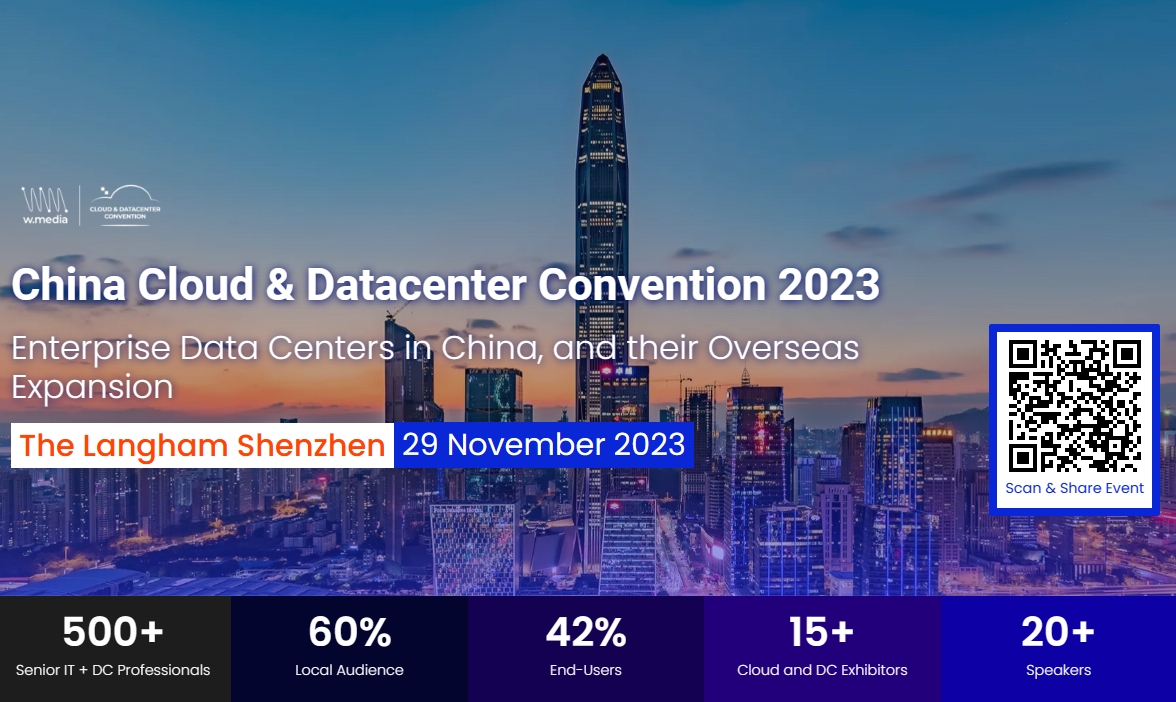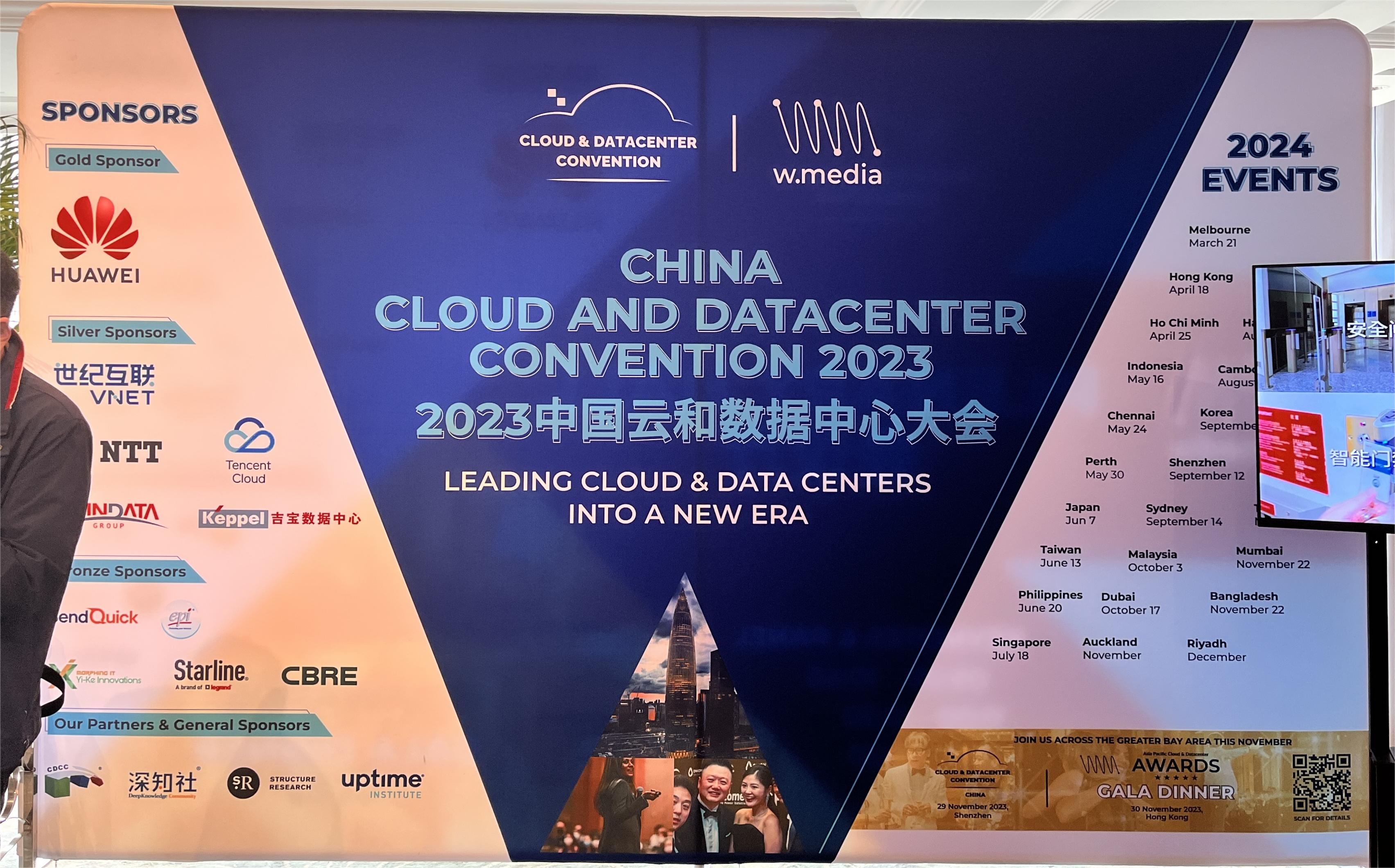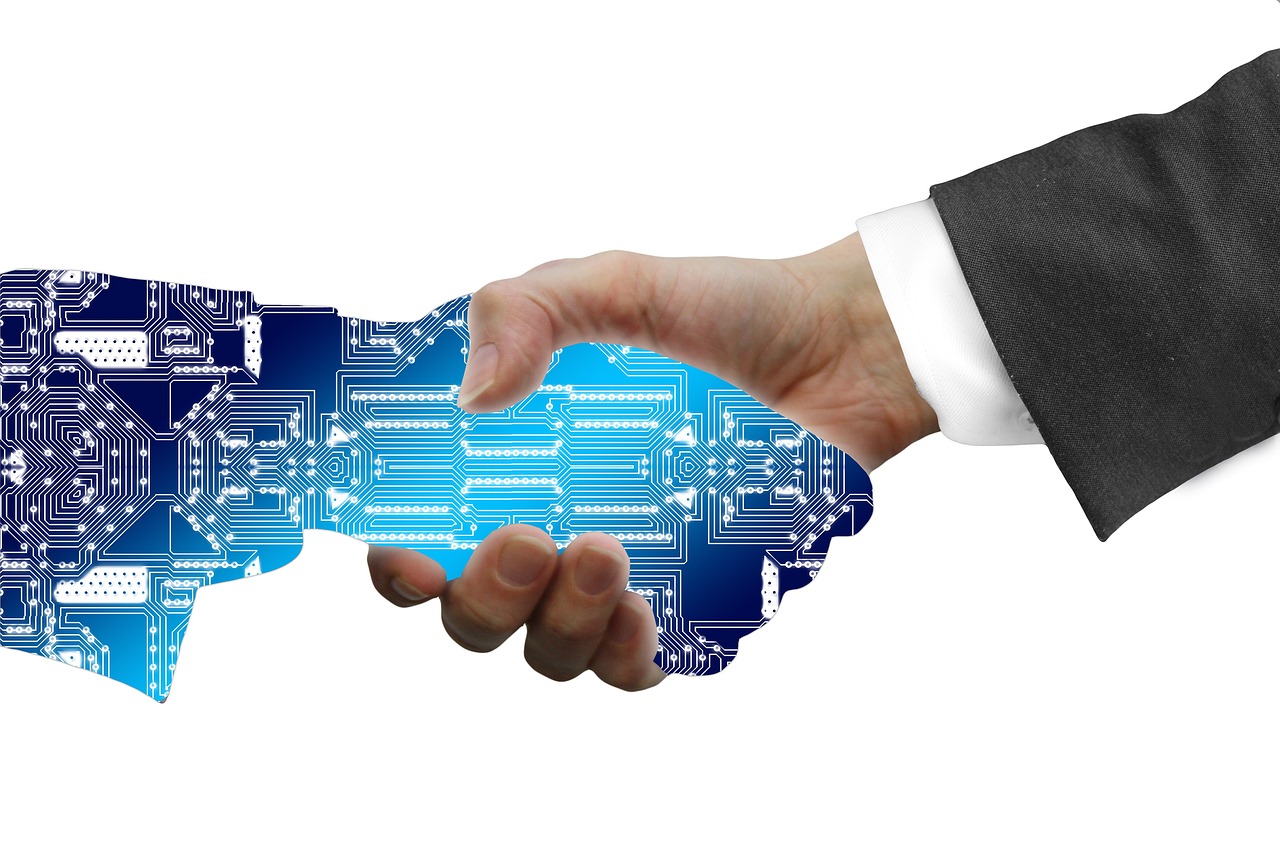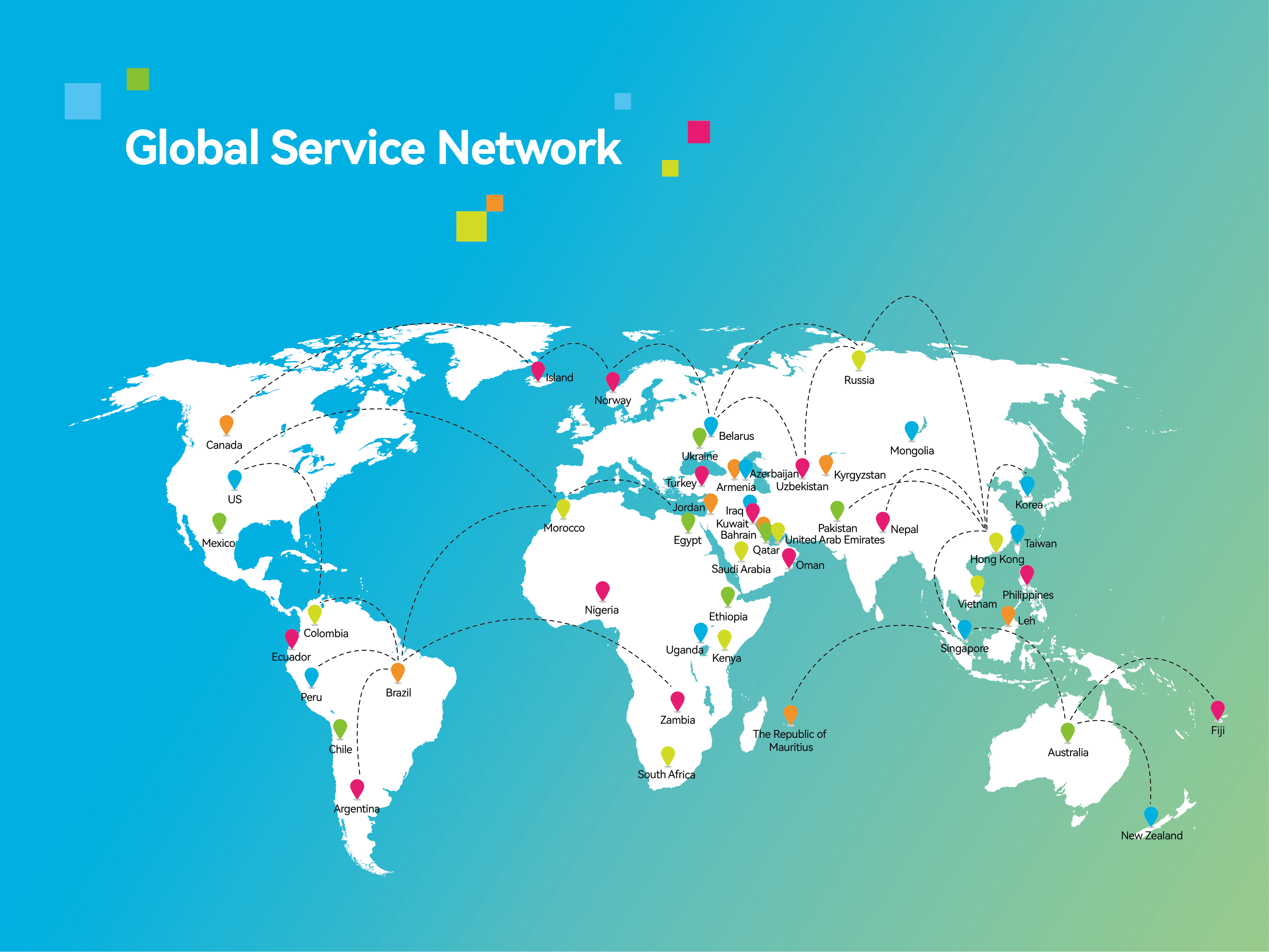

With the expansion of global digital business, digital transformation and explosive growth of data , Chinese tech giants continue to develop data center business overseas. As a member of the overseas enterprises, Shenzhen 527 Supply Chain Co., Ltd. has been upholding the attitude of continuous learning in order to better adapt to the ever-changing future development trend, better anticipate the risks and challenges of the industry, and better formulate internationalization strategies and layout globally.
On November 29, 2023, Shenzhen 527 Supply Chain Co., Ltd. participated in the China Cloud & Data Center Convention 2023 to learn further about the data center industry in China and the trend of Chinese enterprises sailing overseas.

Since this year, AI applications represented by ChatGPT have received global attention, behind which powerful arithmetic power is needed for support. A brokerage firm's research report shows that the previous growth of arithmetic power used for AI training is in line with Moore's law, about doubling every 20 months; the emergence of deep learning accelerates the performance expansion, and the arithmetic power used for AI training doubles about every 6 months; and the current emergence of large-scale models, whose training arithmetic power is 10 to 100 times the original.
With ChatGPT exploding around the world, all industries are gradually realizing the value of AI technology. Especially with the acceleration of AI industrialization in recent years, AI has also become the basic capability of various industries. From the rise of AI servers, an emerging server category, the market is beginning to show surging demand for AI computing, and the business model will also change.

So what is the specific impact of AI on the data center?
1. Increased Compute Demand: AI tasks typically require large-scale compute power, especially in deep learning. Data centers must invest in high-performance processors, accelerators (e.g., GPUs and TPUs), and cloud computing resources to meet these computational demands.
2. Energy Efficiency : Large-scale AI workloads can lead to a decrease in energy efficiency in data centers. To reduce environmental impact, data centers need to adopt energy efficiency optimization measures, such as intelligent cooling systems and low-power hardware.
3. Deep learning frameworks: Data centers need to support various deep learning frameworks, such as TensorFlow, PyTorch, etc., to meet the needs of different AI tasks. This may involve configuring the appropriate software and hardware infrastructure in the data center.
4. High Performance Computing (HPC): Data centers use HPC technologies to meet the massively parallel processing needs of AI. This may involve deploying supercomputers in the data center to train complex neural network models faster.
5. Security: AI systems involve processing large amounts of sensitive data, so data centers must strengthen security measures, including data encryption, access control, and security audits to ensure data confidentiality and integrity.
6. Hardware update pressure: In order to meet the demands of AI workloads, data centers may need to frequently update hardware equipment, including high-performance processors, gas pedals (such as GPUs and TPUs), and so on, which poses challenges in terms of capital investment and equipment replacement.
7.Automation Challenges: Implementing automation is key to optimizing data center operations and maintenance, but introducing automation also brings management and monitoring challenges. Ensuring the reliability and security of automated systems is a complex task.
Since AI big models can bring challenges to data centers, they can certainly bring opportunities to data centers as well.

1 Large-scale data management: The development of AI drives data centers to better manage large-scale datasets, which not only includes efficient data storage and transmission, but also involves opportunities in data cleansing, annotation and preprocessing.
2 Automation and Intelligent Operation and Maintenance: The introduction of AI technologies provides data centers with opportunities to optimize operation and maintenance, including automatic malfunctions detection, resource optimization, and intelligent scheduling to improve efficiency and reduce operational costs.
3. Energy efficiency and green technologies: In the face of the high energy consumption of AI computing, data centers have the opportunity to introduce more energy-efficient hardware, adopt green energy, and improve overall energy efficiency through technologies such as smart cooling and heat recovery.
4. Industry Collaboration and Innovation: The widespread adoption of AI is driving collaboration between data centers and different industries, providing opportunities to jointly address technical and business challenges and leading to the emergence of innovative cross-industry solutions.
5. Cloud and Edge Computing: With the popularization of AI, cloud and edge computing have become an important development direction for data centers, providing opportunities for more flexible resource management and lower latency AI applications.
Behind the rapid development of China's data centers, the problems of sloppy data center development mode, imbalance of east-west layout, high energy consumption, etc. are highlighted, and the problem of high energy consumption of data centers should not be ignored.
Data centers will become one of the few industries in the future where energy consumption accounts for the continuous growth of the proportion of total social electricity consumption and carbon emissions, bringing great pressure on the energy supply and environmental protection of the whole society, actively promoting the green and low-carbon development of data centers and practicing carbon neutrality has become imminent.
The "14th Five-Year Plan" for the development of the information and communications industry proposes that by 2025, the computing power of the national data center will reach 3.3 times that of 2020; accelerating the construction of green data centers has become a basic requirement for ensuring the sustainability of resources and environment.
How to build a green data center?
1. Adopt green energy: Consider using renewable energy sources such as solar, wind or other green power sources to reduce reliance on traditional energy sources and thus reduce carbon footprint.
2. Intelligent cooling system: Deploy an intelligent cooling system to dynamically cool the data center according to actual needs. Use cooling technologies such as chilled water and liquid cooling systems to improve cooling efficiency.
3. Heat Recovery Technology: Utilize waste heat recovery technology to minimize energy waste by using the heat generated for heating or other purposes.
4. Green Technology and Hardware: Select hardware and green technology with higher energy efficiency and lower energy consumption, such as energy-efficient servers and liquid-cooling systems, to improve overall energy efficiency.
5. Automated Operation and Maintenance: Introduce automation tools and intelligent monitoring systems to automate the management of equipment, servers and networks to improve operation and maintenance efficiency and reduce energy waste.
In the face of changing market trends and demands, how can offshore enterprises better lay out their data centers globally?
How should overseas enterprises take action?

1 Market Research and Selection
When choosing a market to go overseas, conduct sufficient market research to understand the needs and trends of local AI applications, and choose a market with potential. For example, Asia, Europe and North America.
In 2021, the data center market size in Asia reached $33.2 billion, accounting for 43.4% of the total global data center market size, which is the largest data center market in the world: North America and Europe accounted for 30.1% and 21.8% of the total global data center market size with $23.02 billion and $16.72 billion of data center market size, respectively; South America, Africa and Oceania The combined market size of the data center industry has a total of US$3.61 billion, accounting for a relatively small share of less than 5%.
Asian data center market is mainly concentrated in East Asia's mainland China, Japan, South Korea, Singapore and India, accounting for about 25% of the total supply scale of the Asian data center market.
The United States is the absolute dominant country in North America, its total economic volume and economic growth rate far exceeds that of other countries, and the digital economy accounts for more than 60% of the total value of GDP, which lays a good foundation for the rapid development of the data center industry, accounting for more than 90% of the data center market size in North America; followed by countries such as Canada and Mexico.
More than 70% of the resources of European data centers are distributed in Western Europe, followed by Southern Europe and Northern Europe. Western Europe has the famous European "FLAP data center market", namely Frankfurt (F), London (L), Amsterdam (A) and Paris (P). As the oldest data center primary market in Europe, FLAP accounts for about 70% of the total data center market in Europe, where major data center service providers such as Equinix and NTT, and international large-scale public cloud service providers such as Facebook, Microsoft, and Google are located. (Source: Global Data Center Market Research Report 2021-2022)
2.Global Partners
Building data centers globally involves various risks, including market volatility and political instability. Establishing partnerships helps in sharing risks and developing effective crisis management plans. Choosing to establish strategic partnerships locally, including with local companies, technology providers, etc., allows for a better understanding of local regulations and compliance standards and adaptation to the local market. In the face of rapidly changing technology and market environments, partnerships allow organizations to be more flexible and adaptable to change. Being able to rely on the expertise and resources of partners allows for better adaptation to new challenges.

3. Green Energy
Choose to use renewable energy sources, such as solar, wind or hydro, to reduce the carbon footprint of your data center. Establish partnerships with local renewable energy providers to promote the use of green power. Hardware and green technologies that are more energy efficient and consume less energy, such as energy efficient servers and liquid cooling systems, can also be selected to improve overall energy efficiency. Encourage partners and customers to adopt green practices and work together to promote the sustainable development of the entire ecosystem. Incorporate green data center construction into corporate social responsibility and sustainability strategies to ensure that greening initiatives are consistent with corporate core values.

Shenzhen 527 Supply Chain Co., Ltd. is committed to becoming an IDC (Internet Data Center) full lifecycle service provider, providing one-stop integrated service solutions for Internet enterprises, data centers, cloud computing enterprises and equipment manufacturers.
527 Supply Chain Co., Ltd. has rich experience in server and IT equipment transportation, with a global service network. After years of business accumulation and continuous innovation, we have developed unique advantages in equipment procurement, international logistics and transportation, data center relocation, data erasure, equipment loading and unloading, and packaging and processing, etc. We help our customers to solve their problems with professionalism, high efficiency, safety and soundness.
With more than 60 nodes in seven continents, Shenzhen 527 Supply Chain Co., Ltd. provides one-stop services for hundreds of head Internet enterprises, IDC service providers, data centers and cloud computing enterprises. At the same time, we uphold the spirit of never-ending learning and continuous improvement, and strive to move forward to meet the wind and set sail, so that international logistics truly serve the community.

